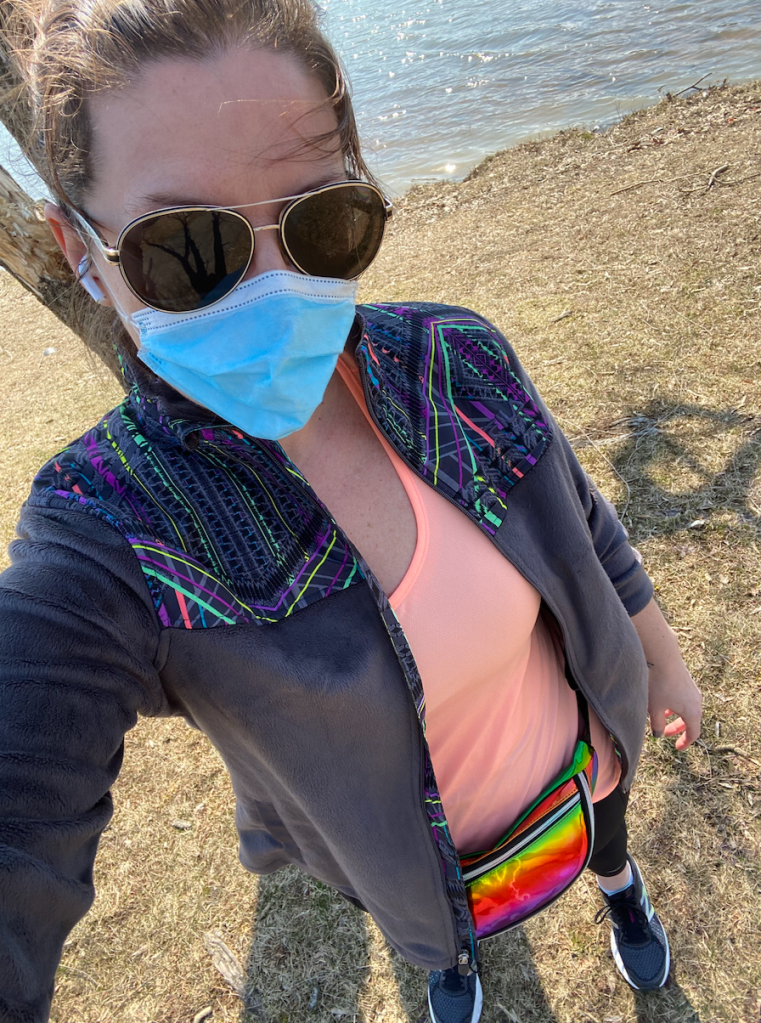A little more than a month ago, I was doing my morning scroll through my Instagram feed and stumbled on Reese Witherspoon’s IG Live video detailing how she makes herself a green smoothie every morning.
In her video, Reese explained that when she first met Kerry Washington, she remarked how clear her skin was and asked her for her secret. Kerry told her that she drinks this smoothie every day, and ever since then, Reese has done the same.
Because I was instantly convinced that this was the key to both of their beauty – that, or there is an oil painting of both of them in some dusty attic somewhere that is aging instead of them – and the fact that it seemed SUPER easy to make, I decided to give this a shot too.
The Method
If you’re interested in watching me perform this science experiment, you can watch the first attempt here. Long story short: I definitely didn’t blend it enough and omitted the almond butter. It also confirmed that I don’t enjoy coconut water in ANY capacity, so I switched to water or almond milk for subsequent batches. It also gave me the idea to add collagen powder because it was easier to add to this smoothie than to my coffee like I’d been doing for weeks.
Note: This recipe also makes roughly 60 ounces. I can’t fathom drinking 60 ounces of ANYTHING, so I took Reese’s advice and split it into two and saved the second half for the next day. This can give me middling results because fruit on day two is always a little weird. But re-blending it tends to revive it, and this is the method that I’ve stuck with.
The Results
I’ll be real: I started this because of Reese’s skin claims, but I really wasn’t expecting any eye-popping results in the skin department. Some people just have good genes. But to my surprise, something interesting happened.
About a year ago, a cancer scare convinced me to stop taking hormonal birth control after nearly 20 years, and my skin has been reacting badly ever since. It was like every zit I managed to avoid for 20 years on the pill came back for revenge, all over my chin and neck for 8 straight months, and nothing I did could stop it. Painful red welts every 3 weeks (timed with my cycle) made me super self-conscious. I wasted money on tons of topical treatments that never worked, and I was miserable for most of the last year (on top of being anxious and depressed because of the pandemic).
After less than a week of smoothies, the acne all but disappeared.
I thought I was just having a good skin week at first, and kept an eye on it. But one week went by, then another, and another, and no acne. Yes, I have one or two spots that manage to make their way to the surface, but it is NOTHING like it used to be, and I could cry from happiness.
I also thought this amount of fiber would have… shall we say… explosive results. I’m pleased to report that I have so far suffered NO ill effects. On the flip side, I will say that if I accidentally skip a day or two of the smoothie, I DO start to notice a NEGATIVE difference in my skin and in my stomach. TMI? Maybe. But we keep it real here.
Final Thoughts
Granted, the skin results that I’ve seen cannot be 100% proven by smoothie magic, but the way I see it, there’s no downside to eating all those fruits and veggies each day, right?
After a few tries, my final version of Reese & Kerry’s Smoothie is:
- 2 heads of Romaine
- 1 cup spinach
- 2-3 stalks celery
- 1 banana
- 1 apple
- 1 pear
- 1/2 lemon
- 6 – 8 ounces almond milk or water
- 6 ice cubes
- 4 scoops of Vital Proteins collagen powder
Yes, it’s kind of a pain to always make sure that we have all these fresh fruits and vegetables around. But after having such good results over the last month, I’m willing to keep this concoction in my daily routine as often as I can to keep the good vibes flowing!
UPDATE: One year later, I’m still drinking these smoothies – and still seeing the benefits! Take a look at how it’s going now, with before and after pics and all.











